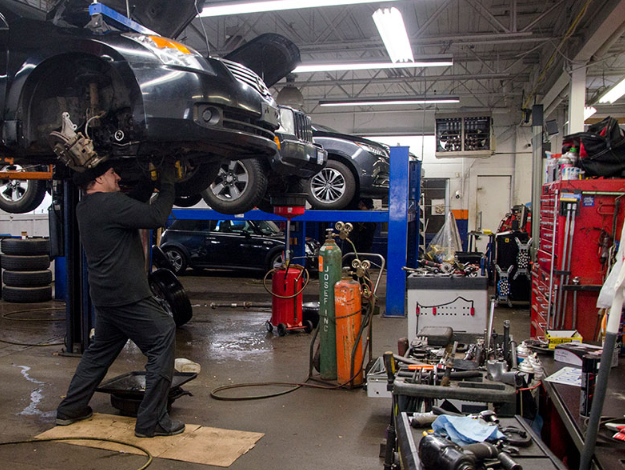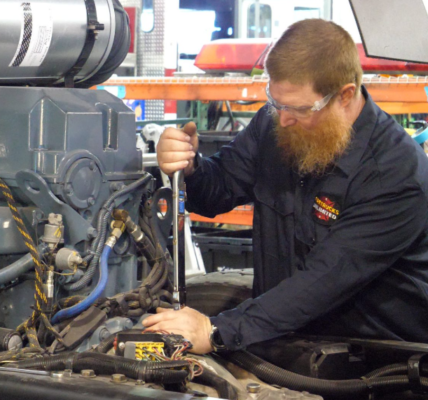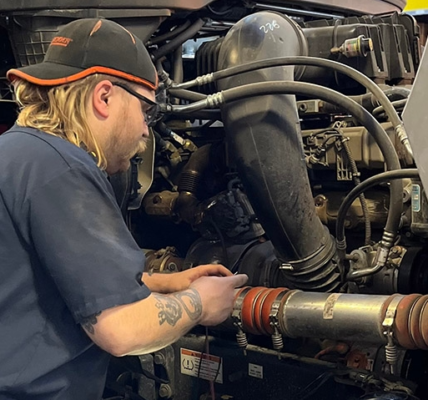Car repairs can feel overwhelming, especially if you’re not familiar with what’s under the hood. But taking care of your vehicle is more than just a chore—it’s an investment in your safety and wallet. Whether you’re dealing with a mysterious dashboard light or a noisy engine, understanding the basics of auto repair can help you avoid stress and unnecessary costs. Let’s break it down into manageable steps, share some tips, and talk about when to call in the pros.
Common Car Repairs You Should Know About
Every car owner will eventually face repairs, and some issues are more common than others. Here are a few to watch out for:
- Brake Repairs:
- Symptoms: Squeaking, grinding, or a spongy brake pedal.
- Cause: Worn brake pads, warped rotors, or air in the brake lines.
- Tip: Don’t wait—brake issues can compromise your safety.
- Battery Replacement:
- Symptoms: Trouble starting the car, dim headlights, or dashboard battery light.
- Cause: Old age (most car batteries last 3–5 years) or leaving lights on overnight.
- Tip: Carry jumper cables and test your battery annually.
- Tire Repairs or Replacements:
- Symptoms: Low tread, uneven wear, or frequent flats.
- Cause: Potholes, improper inflation, or worn treads.
- Tip: Rotate your tires every 6,000–8,000 miles and check pressure monthly.
- Oil Changes:
- Symptoms: Check engine light or sluggish engine performance.
- Cause: Old, dirty oil that no longer lubricates effectively.
- Tip: Stick to your car’s recommended oil change interval (typically every 5,000–7,500 miles).
- Engine Repairs:
- Symptoms: Knocking sounds, misfires, or a noticeable loss of power.
- Cause: Ignition coil issues, fuel delivery problems, or worn-out spark plugs.
- Tip: Don’t ignore the check engine light—it’s often your car’s way of preventing further damage.
DIY Repairs vs. Professional Help
Some car issues are simple enough to handle on your own, while others require a certified mechanic. Here’s a quick guide to knowing the difference:
- DIY Repairs You Can Handle:
- Replacing windshield wipers.
- Changing the air filter or cabin filter.
- Topping off fluids like windshield washer fluid or coolant.
- Swapping out lightbulbs (e.g., headlights or taillights).
- Repairs Best Left to the Pros:
- Brake system repairs (e.g., pads, rotors, or calipers).
- Transmission work.
- Electrical system diagnostics.
- Engine repairs or replacements.
When in doubt, it’s always safer to consult a professional. DIYing something beyond your comfort zone can lead to bigger problems—or even accidents.
How to Choose a Reliable Auto Repair Shop
Finding a trustworthy mechanic is like finding a good doctor for your car. Here’s how to pick the right one:
- Look for Certifications:
- Shops with ASE-certified mechanics are a great place to start. This certification means the technician has met industry standards for knowledge and skills.
- Check Reviews and Ask Around:
- Word of mouth is powerful. Ask friends or family for recommendations, and check online reviews to see what others say about the shop.
- Get a Written Estimate:
- A reliable shop will provide a clear, itemized estimate before starting any work.
- Ask About Warranties:
- Many shops offer warranties on parts and labor. It’s a good sign they stand behind their work.
- Start Small:
- If you’re trying out a new mechanic, start with something minor like an oil change to see how they handle the service.
Preventative Maintenance Is Key
One of the best ways to avoid costly repairs is by staying on top of regular maintenance. Think of it like a routine checkup for your car. Here’s a quick checklist:
- Oil Changes: Follow the manufacturer’s recommended schedule.
- Tire Care: Check air pressure, rotate tires, and replace them when the tread is low.
- Brake Inspections: Have your brakes checked at least once a year.
- Fluid Levels: Regularly check coolant, brake fluid, transmission fluid, and power steering fluid.
- Battery Tests: Test your battery annually and clean the terminals as needed.
- Belts and Hoses: Inspect for cracks or wear every 30,000 miles.
Signs You Need Immediate Repairs
Sometimes, your car gives you clear signals that something’s wrong. If you notice any of these, get it checked out ASAP:
- Unusual Noises: Grinding, squealing, or clunking sounds.
- Dashboard Warning Lights: Don’t ignore them—they’re there for a reason.
- Vibrations or Shaking: Could indicate alignment issues, worn tires, or suspension problems.
- Leaking Fluids: If you see puddles under your car, it’s time to investigate.
- Burning Smells: Often a sign of overheating or oil leaks.
The Cost of Auto Repairs
Repair costs vary widely depending on the issue, your car’s make and model, and where you live. Here’s a general idea of common repair costs:
- Oil change: $50–$100
- Brake pad replacement: $150–$300
- Battery replacement: $100–$200
- Alternator replacement: $400–$700
- Transmission repair: $1,000–$4,000
While these numbers might seem steep, routine maintenance can help prevent many of these issues from cropping up in the first place.
Final Thoughts
Taking care of your car doesn’t have to be intimidating. By learning the basics, staying on top of maintenance, and building a relationship with a reliable mechanic, you’ll save yourself a ton of stress (and money) in the long run.
Cars are an investment, and a little TLC goes a long way toward keeping them running smoothly for years to come. So, whether it’s a quick oil change or a more complex repair, take the time to give your ride the attention it deserves—you won’t regret it!








